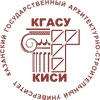About the authors
| First name, Middle name, Last name, Scientific degree, Scientific rank, Current position. Full and brief name of the organization, The organization address. | Sofya N. Medvedeva, Kazan State Power Engineering University, Kazan, Russian Federation E-mail: This e-mail address is being protected from spambots. You need JavaScript enabled to view it Alyona Y. Vlasova, candidate of technical sciences, associate professor, Kazan State Power Engineering University, Kazan, Russian Federation E-mail: This e-mail address is being protected from spambots. You need JavaScript enabled to view it Rustem R. Vildanov, candidate of technical sciences, associate professor, Kazan State Power Engineering University, Kazan, Russian Federation E-mail: This e-mail address is being protected from spambots. You need JavaScript enabled to view it |
| Title of the article | Analysis of the quality of drinking water in Kazan in the period of 2021-2022 |
| Abstract. | Problem statement. The development and increase in the capacity of industry, including enterprises of the fuel and energy complex, leads to a significant increase in the consumption of fresh water. Using the example of thermal power plants, an increase in production capacity entails the increase in the need for desalinated water, which is used as a working fluid, which means that the productivity of water treatment plants increases. Any production is associated with water consumption, which leads to depletion of resources and a significant reduction in the number of sources of water suitable for household and drinking needs. In addition, enterprises discharge waste water into reservoirs, which leads to pollution of aquaculture. Considering that water purification technologies for household and drinking purposes were developed in the middle of the last century, today these installations are obsolete. Increasingly, consumers complain about the inconsistency of the quality of household drinking water with the standards for organoleptic indicators (smell, taste, aftertaste). Therefore, the purpose of this work is to analyze the water quality of household and drinking water supply by sample parameters in the context of the districts of the city of Kazan by season in the period of 2021-2022. To achieve this goal, the following tasks were set: studying the water supply systems of Kazan; conducting laboratory studies in certain districts of the city in the period of 2021-2022 and analyzing average indicators of drinking water quality. The following methods were used for the analysis: titrimetric, turbidimetric and potentiometric. Based on the results obtained, measures were proposed to improve the quality of water for household and drinking purposes. Results. Laboratory studies were aimed at determining the following indicators: total salinity, electrical conductivity, hydrogen index, total hardness, permanganate oxidability, alkalinity, content of chlorides, ammonium ions, total iron (III), sulfate ions. The choice of determining exactly these indicators was made considering consumer complaints and their possible causes, as well as the instrument base of the university laboratory. Indicators such as total salinity, specific electrical conductivity, alkalinity, hardness, and sulfate ion content characterize the qualitative and quantitative composition of deposits on the inner surface of pipelines. The hydrogen index, total iron (III), and chloride content are characterized for corrosion aggressiveness (drinking water may have an unpleasant odor and taste, as well as have an increased color). Permanganate oxidizability and the content of ammonium ions were determined in order to determine organic compounds and the cause of their appearance. Excess of ammonium ions indicate the presence of ingress of sewage. During the experiments, it was found out that some indicators are at the boundary conditions of the maximum permissible concentrations, which can negatively affect the livelihoods of the population using this water. To solve this problem, recommendations were given to reduce the negative factor. Conclusions. Based on the results obtained, measures were proposed for the water supply industry, which consisted in the implementation of programs for the modernization, construction and reconstruction of centralized water supply facilities to improve the reliability of operation, ensure a favorable environmental and epidemiological situation, reduce the cost of operation and repair of the complex, connect the suburbs of Kazan to centralized water supply and sanitation, as well as creating a reserve capacity and replaced worn-out networks with an increase in diameter to increase the system capacity. |
| Keywords. | household drinking water, quality, water supply, purification, maximum permissible concentration, monitoring, analysis, impurities |
| For citations: | Medvedeva S.N., Vlasova A.Yu., Vildanov R.R. Analysis of the quality of drinking water in Kazan in the period of 2021-2022 // News KSUAE, 2024, № 1(67), p. 157-167, DOI: 10.48612/NewsKSUAE/67.16, EDN: WUGLVA |














